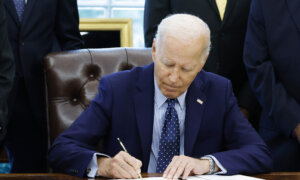Multiple Social Security Administration (SSA) policy updates, including rental and food calculations, which were designed to increase people’s access to federal benefits, took effect on Oct. 1.
From now on, the agency will no longer include food in in-kind support and maintenance (ISM) calculations. Furthermore, the SSA has expanded its rental subsidy policy exception, along with other beneficial amendments.
“These changes will help more people access crucial SSI benefits,” SSA Commissioner Martin O'Malley said in a Sept. 30 statement. “By simplifying and expanding our policies, we are making SSI smarter, removing barriers to accessing payments, and reducing the burden on the public and agency staff.”
Supplemental Security Income (SSI) is offered to U.S. citizens with a disability or blindness and to adults ages 65 and older with constrained income and resources. The federal benefits assist recipients with life essentials such as rent, food, clothing, and medicine. The beneficiaries must meet eligibility requirements, including income and resource limits.
Food Receipts
On March 27, the SSA published a final rule titled “Omitting Food from In-Kind Support and Maintenance (ISM) Calculations.”Under the old rules, ISM included food that a person may receive from someone such as a family member. This could subsequently impact the individual’s eligibility or reduce their SSI amount as the agency considers ISM as unearned income.
The agency has now scrapped food from ISM calculations and will no longer consider informal food assistance from friends, family, and community networks of support while assessing eligibility and payment amounts.
This policy change reduces month-to-month variability in payment amounts and increases payment accuracy and administrative savings, according to the agency.
“Simplifying our policies is a commonsense solution that reduces the burden on the public and agency staff and helps promote equity by removing barriers to accessing payments,” O’Malley said.
Rent Subsidies
In April, the agency issued a final rule, “Expansion of the Rental Subsidy Policy for Supplemental Security Income (SSI) Applicants and Recipients,” which sought to expand the policy from seven states—Connecticut, Illinois, Indiana, New York, Texas, Vermont, and Wisconsin—to the entire United States. From Oct. 1 onward, the subsidy applies nationwide.There is a maximum limit on the monthly payments that people can receive; for 2024, the limit is set at $943 per person. The amount received by a person can be reduced based on various factors, one of which is their housing situation.
SSI payments are reduced if the recipient lives in another person’s house but does not pay their fair share of housing costs. For instance, if an individual were to rent a home with a current market rental value of $800 but pay only a discounted rate of $600, the $200 difference is considered a rental subsidy.
This rental subsidy would be deducted from the monthly SSI payment. So if a person qualifies for the full $943 in SSI monthly payment but has a rental subsidy of $200, the SSA has to pay only $743. In addition to rentals, the rule also affects people living in nursing homes and board-and-care facilities.
Based on the policy change, SSI recipients who get rental assistance, such as renting a home at a discounted rate, will be less likely to see their monthly payments reduced.
“This may increase the benefit amount some people are eligible to receive and will allow more people to qualify for critical SSI payments,” the agency stated.
Public Assistance Household
In May, the SSA published a final rule titled “Expand the Definition of a Public Assistance Household.”“Under the final rule, beginning Sept. 30, 2024, the agency will expand the definition of a public assistance household to include households receiving Supplemental Nutrition Assistance Program payments and households where not all members receive public assistance,” the statement reads. “The expanded definition will allow more people to qualify for SSI, increase some SSI recipients’ payment amounts, and reduce reporting burdens for individuals living in public assistance households.”
According to the amended rule, a public assistance household is defined as one that has both an SSI applicant or recipient and at least one other household member who receives one or more of the listed means-tested public income-maintenance payments. Previous rules required that all household members receive public assistance to come under the definition.
“This change benefits SSI recipients living in households where only some members receive public assistance,” the SSA stated.
Social Security is seen as a key issue in the upcoming elections.
According to new estimates from the nonpartisan Congressional Budget Office (CBO), the Old-Age and Survivors Insurance Trust Fund’s balance will run dry in fiscal year 2033, and the Disability Insurance Trust Fund could be exhausted by 2064.
The trend in Social Security’s finances is occurring because the trust funds are being drained as the agency pays out more than it takes in from payroll tax revenue.
Over the next seven decades, Social Security’s actuarial deficit—the gap between the income rate of the Social Security Trust Fund and Social Security obligations—will represent 1.5 percent of the gross domestic product, or more than 4 percent of taxable payroll.
CBO research indicates that scheduled benefits in 2035 and 2098 could, respectively, be 23 percent and 28 percent less.
Andrew Moran contributed to the report.














